Naples Attractions: Must-See Landmarks & Hidden Gems in 2025
Ready to explore Italy’s vibrant south? Uncover the best Naples attractions—from Pompeii’s ancient ruins to the underground tunnels of Napoli Sotterranea. Marvel at masterpieces in Capodimonte Museum, toss a coin in San Gennaro’s cathedral, or savor espresso where pizza was born. Our guide reveals hidden courtyards, sunset spots at Castel Sant’Elmo, and local tricks to skip queues at the Royal Palace. Dive into 2,800 years of history, art, and explosive flavors!
Table of Contents
Welcome to Naples, a city that pulsates with history, culture, and the unmistakable charm of southern Italy. As a local resident, I am thrilled to share with you the hidden gems and iconic landmarks that make Naples a destination like no other. From ancient ruins to bustling markets, from breathtaking views to mouthwatering cuisine, Naples has something for everyone. Let's embark on a journey through the heart of this vibrant city.
1. Historical Wonders of Naples
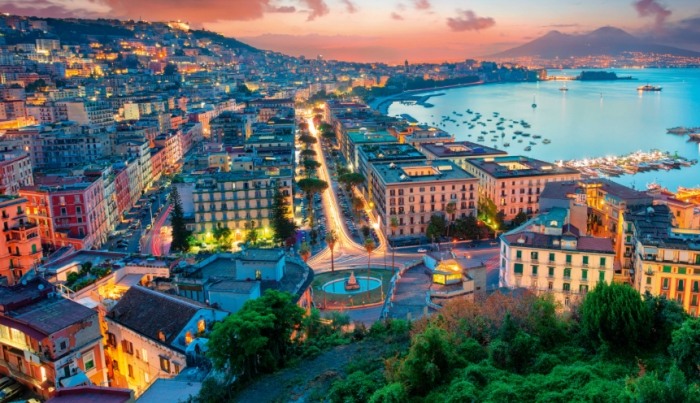
1.1 The Royal Palace of Naples
Historical Background: The Royal Palace of Naples, also known as the Palazzo Reale, is a magnificent Baroque palace that has served as the residence of various monarchs over the centuries. Built in the 17th century, it was later expanded and renovated by successive rulers, including the Bourbons. The palace is a testament to the city's rich history and architectural prowess.
Cultural Features: Inside, visitors can admire the opulent rooms, adorned with frescoes, chandeliers, and priceless artworks. The palace also houses the Royal Library, which contains a vast collection of ancient manuscripts and books.
Opening Hours: Daily, 9:00 AM - 8:00 PM (last admission at 7:00 PM)
Ticket Prices: €12 for adults, €6 for students and seniors, free for children under 18
Transportation: The palace is located in the heart of Naples, easily accessible by bus or metro. Take the Line 1 metro to Piazza Municipio station.
Best Time to Visit: Spring and autumn offer pleasant weather and fewer crowds.
1.2 The Naples National Archaeological Museum
Historical Background: The Naples National Archaeological Museum is one of the world's most important archaeological museums, housing a vast collection of artifacts from ancient Rome, Greece, and Egypt. The museum was founded in the 18th century and has since grown to become a treasure trove of history.
Cultural Features: Highlights include the Farnese Collection, which features ancient sculptures, and the Secret Cabinet, which displays erotic art from Pompeii and Herculaneum. The museum also has a section dedicated to the ancient city of Pompeii.
Opening Hours: Tuesday - Sunday, 9:00 AM - 7:30 PM (last admission at 6:30 PM)
Ticket Prices: €15 for adults, €7.50 for students and seniors, free for children under 18
Transportation: Take the Line 1 metro to Piazza Cavour station.
Best Time to Visit: Early morning or late afternoon to avoid the peak crowds.
1.3 The Castel dell'Ovo
Historical Background: Castel dell'Ovo, or the "Egg Castle," is a medieval castle located on the island of Megaride in the Gulf of Naples. The castle's name is derived from a legend that the Roman poet Virgil placed a magical egg in the castle's foundations to ensure its stability.
Cultural Features: The castle offers panoramic views of the city and the sea. Inside, visitors can explore the castle's history through exhibits and displays.
Opening Hours: Daily, 8:30 AM - 7:00 PM (last admission at 6:30 PM)
Ticket Prices: Free entry
Transportation: Take a short ferry ride from the Molo Beverello pier to the island.
Best Time to Visit: Sunset for the most breathtaking views.
1.4 The Catacombs of San Gennaro
Historical Background: The Catacombs of San Gennaro are ancient underground burial grounds that date back to the 2nd century AD. Named after Saint Januarius, the patron saint of Naples, the catacombs are a significant site for both Christians and historians.
Cultural Features: Visitors can explore the labyrinthine tunnels, which are decorated with frescoes and inscriptions. The catacombs also house the relics of Saint Januarius.
Opening Hours: Tuesday - Sunday, 10:00 AM - 5:00 PM (last admission at 4:00 PM)
Ticket Prices: €9 for adults, €4.50 for students and seniors, free for children under 10
Transportation: Take the Line 1 metro to Piazza Cavour station, then walk to the catacombs.
Best Time to Visit: Weekdays to avoid the crowds.
2. Cultural Delights
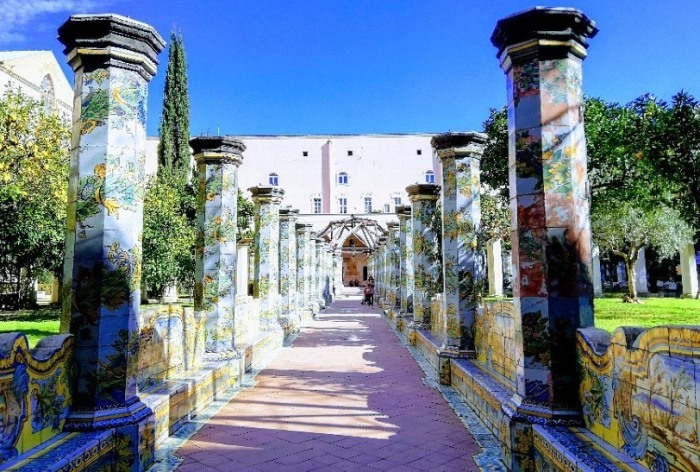
2.1 The Teatro di San Carlo
Historical Background: The Teatro di San Carlo is the oldest continuously operating opera house in Europe, having opened in 1737. It has hosted some of the world's most famous composers and performers, including Rossini, Verdi, and Pavarotti.
Cultural Features: The theater's opulent interior, with its gold-leaf decorations and crystal chandeliers, is a sight to behold. Visitors can attend performances or take a guided tour of the theater.
Opening Hours: Guided tours available daily, 10:00 AM - 5:00 PM
Ticket Prices: Tour tickets range from €8 to €15, depending on the tour type
Transportation: Take the Line 1 metro to Piazza Municipio station.
Best Time to Visit: Evening performances for a truly magical experience.
2.2 The Galleria Umberto I
Historical Background: The Galleria Umberto I is a beautiful 19th-century shopping arcade located in the heart of Naples. Built in the Neo-Renaissance style, it was designed to rival the Galleria Vittorio Emanuele II in Milan.
Cultural Features: The arcade features a glass-domed ceiling, marble floors, and ornate ironwork. It is home to a variety of shops, cafes, and restaurants.
Opening Hours: Daily, 9:00 AM - 9:00 PM
Ticket Prices: Free entry
Transportation: Take the Line 1 metro to Toledo station.
Best Time to Visit: Weekdays during the day for a more relaxed shopping experience.
2.3 The Piazza del Plebiscito
Historical Background: The Piazza del Plebiscito is one of Naples' most iconic squares, named after the 1860 plebiscite that led to the unification of Italy. The square is surrounded by important buildings, including the Royal Palace and the Church of San Francesco di Paola.
Cultural Features: The square is a popular gathering place for locals and tourists alike. It hosts various events and festivals throughout the year.
Opening Hours: Always open
Ticket Prices: Free entry
Transportation: Take the Line 1 metro to Piazza Municipio station.
Best Time to Visit: Evening for a lively atmosphere and street performances.
2.4 The Santa Chiara Church and Cloister
Historical Background: The Santa Chiara Church and Cloister are part of a complex of buildings that includes a monastery and a convent. The church was built in the 14th century and was later restored after being damaged during World War II.
Cultural Features: The church's interior is decorated with beautiful frescoes and a majolica tile floor. The cloister, with its lemon trees and Gothic arches, is a peaceful oasis in the heart of the city.
Opening Hours: Daily, 7:30 AM - 7:30 PM
Ticket Prices: €6 for adults, €3 for students and seniors, free for children under 10
Transportation: Take the Line 1 metro to Dante station.
Best Time to Visit: Morning for a quiet and reflective visit.
3. Natural and Scenic Beauty
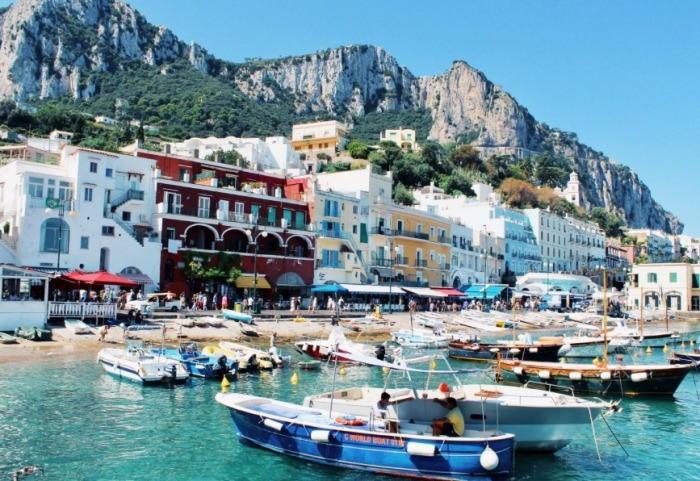
3.1 Mount Vesuvius
Historical Background: Mount Vesuvius is an active volcano located just east of Naples. It is famous for its eruption in 79 AD, which buried the cities of Pompeii and Herculaneum under layers of ash and pumice.
Natural Features: The volcano offers breathtaking views of the surrounding area, including the Bay of Naples and the Amalfi Coast. Visitors can hike to the summit for a closer look at the crater.
Opening Hours: Daily, 9:00 AM - 5:00 PM (last ascent at 4:00 PM)
Ticket Prices: €10 for the shuttle bus to the trailhead, free entry to the national park
Transportation: Take the Circumvesuviana train to Ercolano Scavi station, then take a shuttle bus to the trailhead.
Best Time to Visit: Spring or autumn for pleasant weather and clear views.
3.2 The Phlegraean Fields
Historical Background: The Phlegraean Fields, or Campi Flegrei, are a large volcanic area located west of Naples. The area has been inhabited since ancient times and is home to numerous archaeological sites and natural wonders.
Natural Features: Highlights include the Solfatara, a volcanic crater that emits sulfurous fumes, and the Lake of Avernus, which was considered the entrance to the underworld in Roman mythology.
Opening Hours: Varies by site; check individual attraction websites for details
Ticket Prices: Varies by site; generally around €5 - €10 per attraction
Transportation: Take the Circumvesuviana train to Pozzuoli station, then take a bus or taxi to the desired attraction.
Best Time to Visit: Spring or autumn for mild weather.
3.3 The Gulf of Naples
Natural Features: The Gulf of Naples is a picturesque bay that stretches from the city of Naples to the Sorrentine Peninsula. It is known for its crystal-clear waters, dramatic cliffs, and charming coastal towns.
Activities: Visitors can enjoy swimming, sunbathing, and water sports such as sailing and kayaking. Boat tours are also available, offering stunning views of the coastline.
Best Time to Visit: Summer for warm weather and clear skies.
3.4 The Capodimonte Park
Historical Background: Capodimonte Park is a large public park located on the hill of the same name. It was once the site of a royal hunting lodge and later became a public park in the 19th century.
Natural Features: The park features lush gardens, walking trails, and panoramic views of the city. It is also home to the Capodimonte Museum, which houses a vast collection of art.
Opening Hours: Daily, 7:00 AM - sunset
Ticket Prices: Free entry to the park; €12 for the museum
Transportation: Take the Line 1 metro to Piazza Cavour station, then take a bus or taxi to the park.
Best Time to Visit: Spring or autumn for pleasant weather and blooming flowers.
4. Practical Information for Visitors
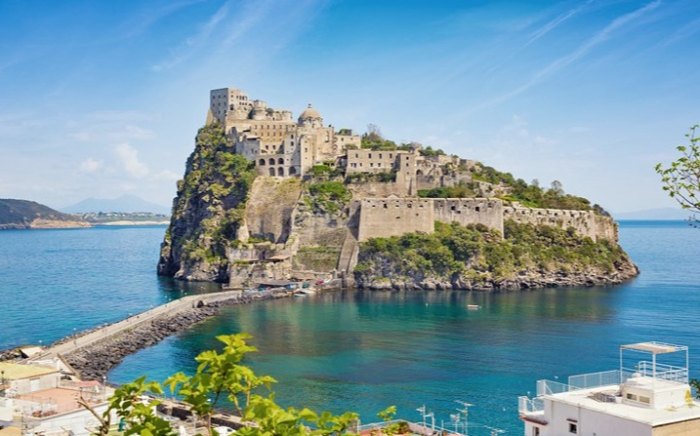
4.1 Opening Hours and Ticket Prices
| Attraction | Opening Hours | Ticket Prices |
|---|---|---|
| Royal Palace of Naples | Daily, 9:00 AM - 8:00 PM | €12 adults, €6 students/seniors, free under 18 |
| Naples National Archaeological Museum | Tue - Sun, 9:00 AM - 7:30 PM | €15 adults, €7.50 students/seniors, free under 18 |
| Castel dell'Ovo | Daily, 8:30 AM - 7:00 PM | Free |
| Catacombs of San Gennaro | Tue - Sun, 10:00 AM - 5:00 PM | €9 adults, €4.50 students/seniors, free under 10 |
| Teatro di San Carlo | Guided tours daily, 10:00 AM - 5:00 PM | €8 - €15 |
| Galleria Umberto I | Daily, 9:00 AM - 9:00 PM | Free |
| Piazza del Plebiscito | Always open | Free |
| Santa Chiara Church and Cloister | Daily, 7:30 AM - 7:30 PM | €6 adults, €3 students/seniors, free under 10 |
| Mount Vesuvius | Daily, 9:00 AM - 5:00 PM | €10 shuttle bus, free national park entry |
| Phlegraean Fields (various sites) | Varies by site | €5 - €10 per attraction |
| Capodimonte Park | Daily, 7:00 AM - sunset | Free park entry, €12 museum |
4.2 Transportation Options
- Metro: Naples has a comprehensive metro system with two lines (Line 1 and Line 6). Tickets can be purchased at stations or from vending machines.
- Bus: Buses cover a wide area of the city and are a convenient way to reach attractions that are not accessible by metro.
- Circumvesuviana Train: This regional train connects Naples to nearby towns such as Pompeii, Herculaneum, and Sorrento.
- Ferry: Ferries operate between Naples and the islands of Capri, Ischia, and Procida, as well as to the Castel dell'Ovo.
4.3 Best Times to Visit
- Spring (March - May): Mild weather, blooming flowers, and fewer crowds.
- Autumn (September - November): Pleasant temperatures, beautiful fall foliage, and cultural events.
- Summer (June - August): Warm weather, beach activities, and festivals, but also the busiest time of year.
- Winter (December - February): Cooler weather, Christmas markets, and fewer tourists, but some attractions may have reduced hours.
4.4 Special Events and Festivals
- Carnevale di Napoli: A lively carnival celebration held in February or March, featuring parades, costumes, and street parties.
- Festa di San Gennaro: A major religious festival held in September, honoring the patron saint of Naples. The event includes processions, fireworks, and traditional food.
- Naples Film Festival: An annual film festival held in November, showcasing both Italian and international films.
5. Where to Stay
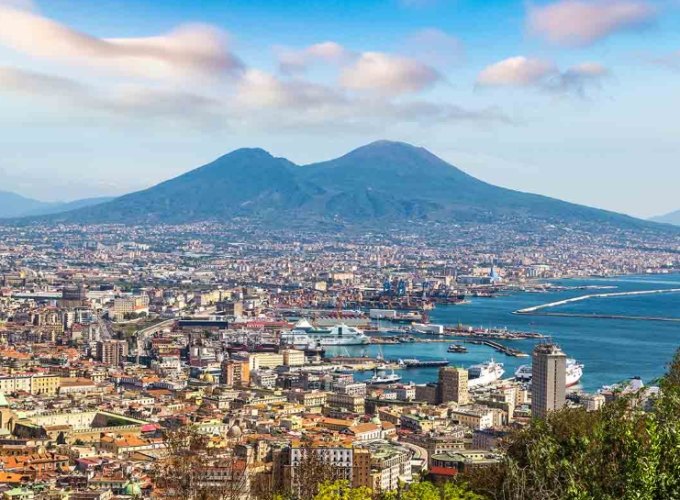
5.1 Luxury Accommodations
- Grand Hotel Vesuvio: A historic 5-star hotel located on the waterfront, offering stunning views of the Gulf of Naples.
- Romeo Hotel: A contemporary luxury hotel with a rooftop pool and panoramic views of the city.
5.2 Mid-Range Hotels
- Hotel Piazza Bellini: A boutique hotel located in the heart of Naples, near the Piazza Bellini and the University of Naples.
- Decumani Hotel de Charme: A charming hotel housed in a 16th-century palace, featuring elegant rooms and a rooftop terrace.
5.3 Budget-Friendly Options
- Hostel of the Sun: A popular hostel located in the historic center, offering dormitory and private rooms at affordable prices.
- B&B Napoli Centrale: A cozy bed and breakfast located near the central train station, with comfortable rooms and a friendly atmosphere.
6. Dining in Naples
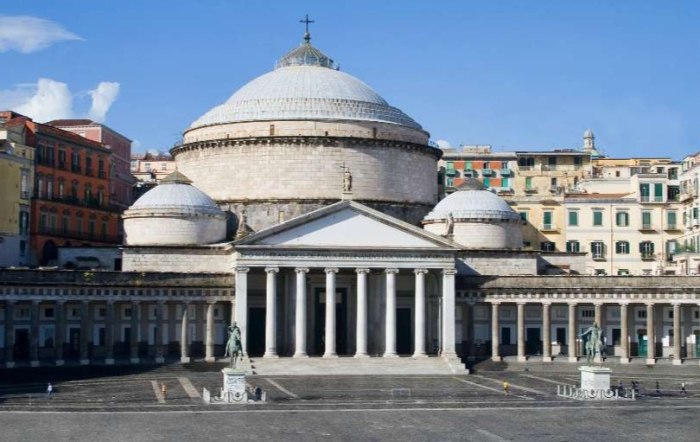
6.1 Must-Try Dishes
- Pizza Margherita: The original pizza, invented in Naples, featuring a thin crust, tomato sauce, mozzarella cheese, and fresh basil.
- Spaghetti alle Vongole: Spaghetti with clams, a classic Neapolitan dish made with fresh clams, garlic, olive oil, and white wine.
- Parmigiana di Melanzane: Eggplant parmesan, a delicious dish made with layers of eggplant, tomato sauce, and cheese.
6.2 Recommended Restaurants
- L'Antica Pizzeria da Michele: A famous pizzeria known for its delicious Margherita and Marinara pizzas.
- Sorbillo: Another renowned pizzeria, offering a variety of traditional and creative pizza toppings.
- Trattoria da Nennella: A cozy trattoria serving authentic Neapolitan cuisine in a lively atmosphere.
6.3 Street Food Delights
- Fried Pizza: A deep-fried pizza dough filled with various toppings, such as ricotta, ham, and mozzarella.
- Arancini: Fried rice balls filled with meat, cheese, or vegetables.
- Gelato: Italian ice cream, available in a wide variety of flavors at local gelaterias.
7. Tips for a Memorable Visit
7.1 Safety and Security
- Be cautious of pickpockets in crowded areas, such as markets and public transportation.
- Avoid walking alone at night in unfamiliar neighborhoods.
- Keep your valuables secure and out of sight.
7.2 Language and Communication
- While many locals speak some English, it's helpful to learn a few basic Italian phrases, such as "Buongiorno" (Good morning), "Grazie" (Thank you), and "Scusa" (Excuse me).
- Consider downloading a translation app on your phone for assistance.
7.3 Cultural Etiquette
- Dress modestly when visiting churches and religious sites.
- Be respectful of local customs and traditions.
- Tipping is not mandatory in Italy, but it's customary to leave a small tip (around 10%) for good service in restaurants.
8. Q&A
8.1 What is Naples Italy best known for?
Naples is best known for its rich history, vibrant culture, and delicious cuisine. The city is home to numerous historical landmarks, such as the Royal Palace of Naples and the Naples National Archaeological Museum, as well as iconic sites like Mount Vesuvius and the Castel dell'Ovo. Naples is also famous for its pizza, which originated in the city, and its lively street life, with bustling markets and charming neighborhoods.
8.2 What to not miss in Naples?
Don't miss the opportunity to visit the historic center of Naples, with its narrow streets, ancient buildings, and vibrant atmosphere. Be sure to explore the Naples National Archaeological Museum, which houses a vast collection of artifacts from ancient Rome, Greece, and Egypt. A trip to Mount Vesuvius is also a must, offering breathtaking views of the surrounding area and a glimpse into the city's volcanic past.
8.3 What are the best things to do in Naples?
The best things to do in Naples include visiting historical landmarks, enjoying the city's cultural offerings, and savoring its delicious cuisine. Take a guided tour of the Teatro di San Carlo, explore the Galleria Umberto I, and relax in the Capodimonte Park. Don't forget to try some authentic Neapolitan pizza and indulge in the city's street food delights.
8.4 What to do in Naples for a day?
For a day in Naples, start by visiting the historic center, exploring the Piazza del Plebiscito and the Santa Chiara Church and Cloister. Then, head to the Naples National Archaeological Museum to admire its ancient artifacts. In the afternoon, take a trip to the Castel dell'Ovo for panoramic views of the city and the sea. End your day with a delicious dinner at a local pizzeria or trattoria.
I hope this guide has inspired you to explore the wonders of Naples. Whether you're a history buff, a culture vulture, or a food lover, Naples has something to offer. Buon viaggio!
About the author:I’m Jack, a proud Roman with a heart full of amore for Italy’s endless wonders. From the ancient ruins whispering tales of empires to the sun-kissed vineyards of Tuscany, from nonna’s secret pasta recipes to Milan’s glittering fashion runways—this blog is your biglietto (ticket) to la dolce vita. Whether you’re a traveler, a food lover, or a culture seeker, join me as we unravel Italy’s treasures, one espresso sip at a time.let’s explore!